|
Judy Malloy: "Each time the song is sung, our notions of it change, and we are changed by it. The words are old. They have been worn into shape by many ears and mouths and have been contemplated often. But every time is new because the time is new, and there is no time like now." - Ciaran Carson [1]
Intertwining Irish history and generations of Irish American family memories in a work of polyphonic literature based on the rhythms of ancient Irish Poetry, the imagined lost Irish Sonata, the madrigal, streams and fountains, and Irish song, From Ireland with Letters is an epic electronic manuscript told in the public space of the Internet. It could also be considered playable text or generative hyperfiction.
The role of displacement and disrupted tradition in the work of contemporary Irish authors [2] is paralleled in this epic Irish American electronic manuscript, which interweaves the stories of Walter Power -- who came to America on The Goodfellow in 1654, stolen from his family by Cromwell's soldiers and sold in the Massachusetts Bay Colony when he was 14 years old -- and his descendant, 19th century Irish American sculptor Hiram Powers, who grew up on a Vermont farm and moved to Florence, Italy, where his work played a symbolic role in the fight against African American slavery in America.
About the composition of From Ireland with Letters From Ireland with Letters is comprised of Eight Cantos, one of which is a Prologue (canto 1) and one of which is a coda. (canto 8) Each canto of From Ireland with Letters is separate and written in a distinctive structure and tempo, but the whole is integrated by themes introduced in the opening Prologue. As a general rule, the work can be read either by waiting for the text to change on its own (as if watching a film or listening to a piece of music) or by clicking on any lexia, in which case the reader takes control of how the story is explored. The authoring system varies from unmeasured notation in cantos I-III, to measured notation (malloy: fiddlers_passage) in cantos IV-VI, to generative hypertext in the concluding cantos.
With the exceptions of the last two cantos, each part of this work of polyphonic/polychoral literature is created with three or four moving columns of poetic text that -- like a piece of music -- work together in counterpoint. And just as a listener needs to listen to a complex work of music more than once to understand how it works, each part of From Ireland with Letters benefits from several "replays".
Weaving through the composition process of From Ireland with Letters is a quixotic search for the mythical lost Irish sonata called up by Grattan Flood, in A History of Irish Music: "The reader has seen that the ancient Irish were acquainted with the ogham music tablature in pre-Christian ages; they had their battle-marches, dance tunes, folk songs, chants. and hymns in the fifth century; they were the earliest to adopt the neums or neumatic notation, for the plain chant of the Western Church; they modified, and introduced Irish melodies into, the Gregorian Chant; they had an intimate acquaintance with the diatonic scale long before it was perfected by Guido of Arezzo; they were the first to employ harmony and counterpoint; they had quite an army of bards and poets; they employed blank verse,elegiac rhymes, consonant, assonant, inverse, burthen, dissyllabic, trisyllabic, and quadrisyllabic rhymes, not to say anything of caoines, laments, elegies, metrical romances, etc.; they invented the musical arrangement which developed into the sonata form; they had a world-famed school of harpers; and, finally, they generously diffused musical knowledge all over Europe." (Dublin: Browne and Nolan, 1906. pp 19-20) A writer's quest for the lost Irish sonata is not likely to result in the discovery of ancient scores. Rather, in this case, a textual obsession has contributed to the creation (or recreation) of an authoring system. The authoring system for much of From Ireland with Letters uses the text-based musical composition structure that I began in 1991 with the three-column Wasting Time (After the Book, Perforations 3, Summer, 1992) and resumed in Berkeley in 2009, influenced by early music at the University of California at Berkeley and in particular by Davitt Moroney's writing and performance, by visiting professor Pedro Memelsdorff's lectures on theory composers in late medieval Italy, and by books including Willi Apel, The Notation of Polyphonic Music 900-1600, 4th edition, Cambridge, MA: The Medieval Academy of America, 1949 and Carl Parrish, Notation of Medieval Music, NY: Norton, 1957. The final two cantos, the post-colonial The Not Yet Named Jig and the Irish American song, when we return again, are written in JavaScript variations of the generative hypertext authoring system, which I created in 1988 for the third file of Uncle Roger and for its name was Penelope. The Eight Cantos of From Ireland with Letters It has been a long journey from March 17, 2010, when From Ireland with Letters began with family pub talk in Berkeley. In that year -- "unfolding in a series of central lexias, while alongside the lexias, an interface of phrases moves in a narrative dance, allowing access to the story at many points..." -- a Prologue set the stage for the work as a whole. canto 1: Prologue Writing about the structure of Irish Dance music, in Traditional Music in Ireland, (Cork, Ireland: Ossian Publications, 1978, p. 27) Irish musician Tomás O'Canainn observes that there is a tendency to concentrate on a few notes of the available scale "and return to these again and again throughout the tune". But when played by an expert player, the result is "a tune which attains a unity of purpose and a build-up of tension eminently satisfying.."
Additionally, the central lexias of the Prologue can be advanced by clicking on the words themselves or by waiting for the lexias to change -- i.e. the narrative will continue even if the reader choses to observe it rather than play it. The interface to the Prologue is a variation of the narrabase interface I created and programmed for The Yellow Bowl in 1992, which allowed the reader to move between two separate but related stories.(A disk version of The Yellow Bowl was exhibited at Digital Identities, Sheppard Gallery, University of Nevada, Reno, February 3-March 3, 1995 and at FISEA, Minneapolis, MN, November, 1993) The interface also incorporates the "lines" interfaces used in l0ve0ne in 1994 and somewhat differently in Dorothy Abrona McCrae in 2000. In the creation of interface. I work somewhat like a painter, who maintains his or her original vision in a series of works, while at the same time somewhat varying each work as the series progresses. And within each larger narrative, there may be variations of structure. __________________ Primary sources for the Prologue are:
Tomás O'Canainn, Traditional Music in Ireland, Cork, Ireland: Ossian Publications, 1978 canto 2: Begin with the Arrival
"The sound of the fiddle Begin with the Arrival takes place in a pub in New Hampshire where Máire is performing the lay of Walter Power. Art Historian, Liam O'Brien, whom she has never met, is in the audience.
Created in a polyphonic text structure and based partly on the cadence of ancient Irish poetry, and on Denis Murphy's Cromwell in Ireland, a History of Cromwell's Irish Campaign, Begin with the Arrival can be experienced either by simply waiting for the text to change, or by clicking on any one of the four lexia spaces, or by a combination of these ways of reading. __________________ Primary sources for Begin with the Arrival are:
Séan Crosson, "The Given Note": Traditional Music and Modern Irish Poetry, Cambridge, UK:
Cambridge Scholars Publishing, 2008 canto 3: Passage
A passage is also a journey: the dichotomy between "The Middle Passage"; (the voyage of the African American captives, who were taken from their homeland and brought across the Atlantic to toil as slaves) Walter Power's journey on a slave ship to America; the difficult passage on packet ships that brought Great Famine immigrants to America; Hiram's voyage to Italy; and the scholar's magic realism passage through Florence in which Liam is immersed in this canto. Other themes move back and forth in the lexia spaces in Passage: details in the works of Hudson Valley painters from Liam's former research; his former girl friend wearing high heels; women whose sculpted or painted images Liam/Hiram sees in virtual travels in Florence; (Leda, Pomona, Flora, Venus) his father playing recordings of Irish music in his carpenter's studio; the passage where the sculptor Hiram Powers describes his design of a fountain for Capitol Park; fountains in Florence; streams flowing down the mountain in New Hampshire where Liam O'Brien has been hiking; and the memory of Máire Powers playing the Irish fiddle. Created in a polyphonic text structure, passage can be experienced either by simply waiting for the text to change, or by clicking on any one of the three lexia spaces, or by a combination of these ways of reading. The work ends when you reach the screen with the words "And all along the banks of the Arno, there were lanterns", but clicking on this phrase will begin it again. To completely experience the text, you might want to read it several times. __________________ Primary sources for Passage are:
Archives Of American Art, Smithsonian Institution, Hiram Powers Papers canto 4: Fiddler's Passage
while in the splashing notes
Created in a polyphonic text structure, fiddlers passage can be experienced either by simply waiting for the text to change, or by clicking on any one of the three lexia spaces, or by a combination of these ways of reading. When the work has played through once, it can be replayed by clicking on "replay fiddlers passage" in the lower right hand corner. Since the text in fiddler's passage moves fast, replaying it allows concentration on different "tracks" of the work. Created in a polyphonic text structure, fiddlers passage can be experienced either by simply waiting for the text to change, or by clicking on any one of the three lexia spaces, or by a combination of these ways of reading. When the work has played through once, it can be replayed by clicking on "replay fiddlers passage" in the lower right hand corner. Since the text in fiddler's passage moves fast, replaying it allows concentration on different "tracks" of the work. Primary sources for Fiddler's Passage are:
"Easy and Slow" Steve Earle, "Galway Girl", recorded with Irish musician Sharon Shannon, on Steve Earle, Transcendental Blues, 2000. James Joyce, "The Sirens", Ulysses, part 11
Hugh Shields, Narrative Singing in Ireland, Dublin: Irish Academic Press, 1993 canto 5: Junction of Several Trails
"In times of peace,
"The early literature of Ireland is so bound up with the early history, and the history so bound up and associated with tribal names, memorial sites, patronymics, and topographical nomenclature, that it presents a kind of heterogeneous whole, that which is recognised history running into and resting upon suspected or often even evident myth, while tribal patronymics and national genealogies abut upon both, and the whole is propped and supported by legions of place- names still there to testify, as it were, to the truth of all" Douglas Hyde, A Literary History of Ireland From Earliest Times to the Present Day, 1899 Junction of Several Trails begins with a sinfonia in which the reader follows Máire Powers and Liam O'Brien on their separate paths to their meeting at the Farmhouse Cafe. It then segues into a cantata conversation. The characters are set in an electronic tapestry, where left and right side continuo/ marginalia are core to the way that, with slowly moving polyphonic text, the narrative is revealed. In Annals of the Irish Harpers, there is a story that illustrates the importance of such magical bardic detail. It concerns how in the Sliabb Echtge mountain range a 10th century harper saved his own life by calling the ghost of his former master, the poet Flann MacLonan, who in a tour de force performance "...recited a poem of one hundred and thirty-two lines, commencing: 'Delightful, delightful lofty Echtge' and followed by the history of the mountains, the warriors and tribes, who had made it their hunting ground including the famous Finn MacCumhaill and his band. Giving the names of peaks, lakes, rivers, fords, woods, he concluded with a eulogy of the Dalcassians of Clare." [3] Songs and Poetry Quoted in Junction of Several Trails The quotation from the Trad ballad "The Gypsy Rover", that appears in Junction of Several Trails, is "The Whistling Gypsy" performed by Leo Maguire in 1950 and also performed by Tommy Makem, among others.
"And when I'm drinking,
"upon his knee a pretty wench
"sometimes
"...she sat down beside him,
"As down the glen one Easter morn
"MacDonagh and MacBride
Rising of the Moon canto 6: Gone with Our Wanderers
"Giovanni Duprè," he said out loud. Electronic Literature has come of age in many ways. For me it is a continued focus on the distinction of screen-based story set in motion; the hunting, gathering and remixing of ancient and contemporary narrative; the thrill of inventing a way to score words like music; honing the craft of telling a story in the public square of the Internet; and the interactivity of allowing the reader the choice to click rather than wait for the word music to progress.
Along the way, in a polyphonic remix, Gone with Our Wanderers replays the words of 19th century Florentine sculptor Giovanni Duprè; replays Giuseppe Verdi's words from his autobiography that concern his antislavery opera Nabucco; replays the Narrative of the Adventures and Escape of Moses Roper from American Slavery, which was published in London in 1837 and went through at least 11 editions. It is 1842. Hiram Powers is in his studio in Florence, creating a model for The Greek Slave. It is the year that Nabucco premiered at La Scala in Milan. The Irish woman poet Frances Browne has just published "Songs of Our Land" in the Irish Penny Journal. Her words echo in a 21st century art historian's informal translation of the chorus of Hebrew slaves from Nabucco: "Va Pensiero". It is 1844, Hiram Powers and the Italian sculptors who work with him are sitting beside the partially carved marble sculpture of The Greek Slave. It is the year that Nabucco was first performed in Florence. Either by watching the words play like a piece of music or by clicking on the words to advance the narrative Gone with Our Wanderers is best read on a laptop screen with "view full screen" selected. The work should run on any platform and browser, but Explorer or Firefox are recommended. It can be read either by watching the words play like a piece of music or by clicking on the words to advance the narrative in a way that the reader choses. In the latter case, there will be times when the music is silent. Wait, and it will return. Once in a while, the the tracks do not all display; reloading the work usually fixes the problem. Primary sources for Gone with our Wanderers:
Frances Browne, "Songs of Our Land", Irish Penny Journal, 1841 Giovanni Duprè Thoughts on art and autobiographical memoirs of Giovanni Duprè; tr. from the Italian by E. M. Peruzzi, Edinburgh,London: Blackwood, 1884. Philip Gossett, "Becoming a Citizen: The Chorus in 'Risorgimento' Opera". Cambridge Opera Journal, 2:1, March 1990. pp. 41-64 J.M.H., Sketches of Italy; Naples - Florence-A Contrast-The Studio of Powers-His Eve,and Greek Slave, Arthur's Magazine, vol III, January - July, 1845. pp. 61-64, 123-126 Roger Parker, "The Exodus of Nabucco", in Roger Parker, Studies in Early Verdi 1832-1844, New Information and Perspectives on the Milanese Musical Milieu and the Operas from Oberto to Ernani, New York & London: Garland Publishing, 1989. pp. 111-141. According to Parker, the first production, which premiered in Milan at La Scala on March 9, 1842, ran for only 8 performances, due to the end of the season. When it opened again at La Scala on August 13, 1842, it ran for 57 performances. (p.117) Nabucco was first performed in Florence at Teatro dell Pergola on January 11, 1844. (Roger Parker, ed.) Giuseppe Verdi, Nabucodonosor, dramma lirico in four parts by Temistocle Solera. (Chicago and London: University of Chicago Press, 1987 Danielè Pistone, Nineteenth-Century Italian Opera from Rossini to Puccini, Portland, OR: Amadeus Press, 1995; translated by E. Thomas Glasow.
Rebecca Reynolds, "'No Ordinary Hands': Hiram Powers' Artistic and Professionally Related Family".
in Sirpa Salenius,ed., Sculptors, Painters, and Italy
- Italian Influences on Nineteenth-Century American Art, Saonara, Italy: il Prato, 2009.
pp. 53-66. Moses Roper, Narrative of the Adventures and Escape of Moses Roper from American Slavery is available online on the Documenting the American South website, sponsored by the University Library of the University of North Carolina at Chapel Hill. "
Giuseppe Verdi, An Autobiographical Sketch (in Giuseppe Verdi,
the Man in his Letters, as edited and selected by Franz Werfel and Paul Stefan;
translated by Edward Downes. New York, L.B. Fischer, 1942 pp in 80-93. Richard P. Wunder, "The Greek Slave", in Richard P. Wunder, Hiram Powers, Vermont Sculptor, 1805-1873, v. I, Newark: University of Delaware Press, 1991. pp. 207-274 canto 7: The Not Yet Named Jig
"Surely what fiction, at the its best, can do, is to arrange data, truths in their real relationship by a process of selection. Like an artist making a picture. Something akin happens to us all as we get on in life. We see data of experience no longer chronologically, but rearranged in their true sequence. The past comes at last to life, transformed, rearranged, immortal." - Dorothy Richardson The Not Yet Named Jig, (From Ireland with Letters, Part VII) is a work of generative hyperfiction that builds a world model of a real but sparsely documented time and place. Rather than randomly permutating words and/or sentences, generative hypernarrative, as I have used it, is created with a database of whole lexias. These lexias, (intuitively but not explicitly linked) are randomly (or more precisely pseudo-randomly) displayed on the computer screen. In the process, generative hyperfiction strives to create a work of fiction or poetry that simulates the way memories come and go in our minds, or in the case of The Not Yet Known Jig, creates surprising world models from carefully composed, contingent lexias. Building on the authoring system I developed for the third file of Uncle Roger in 1987-1988, the lexias for The Not Yet Named Jig appear at the will of the computer, one at a time, or, most effectively, in pages composed of four randomly generated lexias, where their meaning is magically changed by the lexias that randomly frame them. Thus, in the writing and generating of many small scenes, a mise-en-scène for the story of Walter Power and Trial Shepard, emerges. Generative hyperfiction was used in its name was Penelope to create a whole picture of a photographer's life by accumulating details as seen through her own eyes. In The Not Yet Named Jig, it is used to create a world model of a certain place at a certain time by accumulating historic details of the people and the environment in which they lived. The writing was intense and difficult, requiring with each added lexia, a constant replaying/rewriting until the narrative worked. Yet every time a four-lexia page was built and rebuilt, the story became clearer. What seems to be important is that there is no authorial structure to constrain the changing juxtaposition of narrative information. The Narrative
As the writing progressed on The Not Yet Named Jig, how the addition of one lexia changed the whole, was astounding; an initially unknown story emerged as each lexia that I researched and wrote was threaded into the program and replayed at the will of the computer. fiddlers_dawn "The multiple readings of the text finally exist not so much in what the lexias say but rather in the relations they forge with one another. These relations come into existence and dissolve with each reading and unfold into different versions of the text" -- Jaishree Odin, Hypertext and the Female Imaginary ("Judy Malloy's its name was Penelope", p. 58-63)
The decision to move from the polychoral composition (both measured and unmeasured) with which the larger part of From Ireland with Letters was composed, was partially made because of the need for a change of pace in this next to final part. But the primary question was: How could I create a truth-laden world model of a time and place -- the community of Malden in The Massachusetts Bay Area Colony in 1660 -- when many details were not available? The answer was to carefully write all the known details into lexias, fictionalize only when necessary, and allow the computer to bring up the lexias at will. Primary sources for The Not Yet Named Jig are:
William Cronin, Changes in the Land, Indians, Colonists, and the Ecology of New England. NY: Hill and Wang, 1983, 2003 Alice Morse Earle, Home Life in Colonial Days, NY:Macmillan, 1898. David D. Hall, Worlds of Wonder, Days of Judgement, Cambridge, MA: Harvard University Press, 1990. Malden Historical Society, The Register of the Malden Historical Society, Volumes 5-6, 1918 Moore, George H., Notes on the History of Slavery in Massachusetts. NY: D. Appleton, 1866. Mary Harrod Northend, Colonial Homes and Their Furnishings. Boston, MA: Little, Brown, and Company, 1917
Michael J. O'Brien, Pioneer Irish in New England, P.J. Kennedy and Sons, 1937. Edward Salo, "They Can Run the Boat, But Not Ride: Slavery, Segregation and Ferries", African Diaspora Archaeology Newsletter, 12:1, March 2009. Available at: http://scholarworks.umass.edu/adan/vol12/iss1/6 Ralph Hamilton Shepard, Ralph Shepard, Puritan, Dedham, MA, 1893. Frank Waters, (Cheyenne) Brave Are my People: Indian Heroes Not Forgotten; (Santa Fe: Clear Light, 1993) The Winthrop Society, "Passengers of the Abigail, Master Robert Hackwell Voyage of 1635" Sources of Details The quote from Dorothy Richardson that begins this "about page" is in John Rosenberg, Dorothy Richardson, A Critical Biography. NY:Knopf, 1973. pp. 155-156. The long sloping hill, West of the Mystik lakes, on which the woman who was the Sachem of the Massachusetts tribe walks down to the lake is probably the place where I learned to ski as a child, or so I discovered as I cycled through local histories and geographies until I was able to locate the likely place of the Mystik summer home of the Sachem and her tribe. It was not the only place where they resided. I do not want to write exactly where this hill is, nor did I at the time know that that the hill we were skiing on was once the land of a legendary woman, whose powerful presence in the difficult time of 17th century Massachusetts has long been trivialized or obliterated in history books. In the winters of my childhood, there was seldom anyone else packing trails below her home. It was not a ski area, just a gentle slope that I would now like to visit in the summer. Note that the morning depicted in The Not Yet Named Jig is April 24, 1660. The death of the woman, who was the Sachem of the Massachusetts has been given variously as 1650, 1662, and 1667. Whether it is she herself or her spirit who appears from time to time in The Not Yet Named Jig is immaterial to the importance of her presence and the continuing memory of her presence. The Wampanoag story of the giant Moshup (or Maushop) is told in Manitonquat, The Children of the Morning Light. NY: Macmillan, 1994.
Although told in many ways, the version how Finn created the Giants Causeway, told by artist W.H. Bartlett in 1890, is one of the sources of Walter Power's stories of the Irish Giant:
"The dream had returned. The "enchanted island seen annually floating along the coast of Antrim" appears in Ann Plumtre, Narrative of A Residence in Ireland, The Summer of 1814, and That of 1815. London, 1817. p.124
"Farewell to Ireland, Her woods with berries laden, The chalice that Walter Power remembers is described in James G. Robertson, "Notes Referring to the Archer Chalice", Journal of the Royal Society of Antiquaries of Ireland, 1899. pp. 28-31.
"On the first printing press in America,
The ship Desire, built in Marblehead in 1636,
"Where today are the Pequot?
Saint Patrick, Confessio Resonant of the ancient Irish lay and the tradition of the ceilidh, From Ireland with Letters is a work of polyphonic electronic literature, told in the public space of the Internet. The title of this work is taken from Saint Patrick's Confessio, where the words are "from Ireland with innumerable letters". Having escaped from slavery in Ireland, Saint Patrick, had a vision of a man from Ireland asking him -- with many letters -- to return to Erin. In his "Letter To Coroticus", Patrick was also one of the first people whose words against slavery are recorded. Notes
1. Ciaran Carson (Last Night's Fun, NY: North Point Press, 1996. p, 116)
From Ireland with Letters is copyright 2010-2015 Judy Malloy |
|

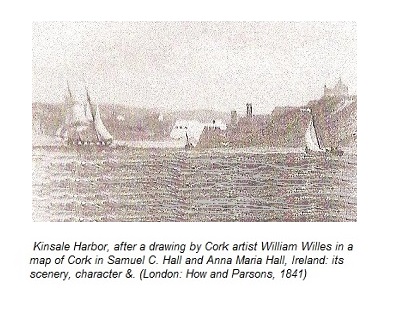
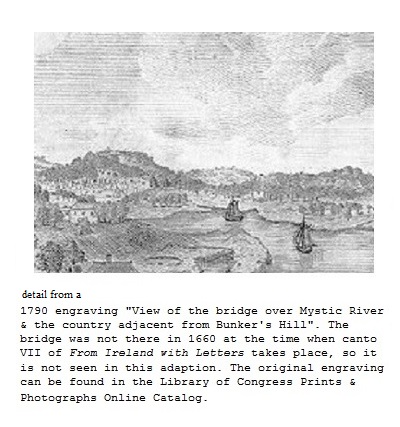 The narrative is a storyteller's retelling of what is known of a true family story. However, the characters who tell it in From Ireland with Letters are fictional. Walter Power's story is initially told by his descendant Máire Powers, an Irish American fiddler who is writing a lay about 17th century Ireland and the enforced servitude of the Irish in 17th century Massachusetts; Hiram Powers' story is initially told by 19th century art historian Liam O'Brien, who is researching the sculptor's life and work. As the narrative progresses, both their own lives and their research begin to merge
The narrative is a storyteller's retelling of what is known of a true family story. However, the characters who tell it in From Ireland with Letters are fictional. Walter Power's story is initially told by his descendant Máire Powers, an Irish American fiddler who is writing a lay about 17th century Ireland and the enforced servitude of the Irish in 17th century Massachusetts; Hiram Powers' story is initially told by 19th century art historian Liam O'Brien, who is researching the sculptor's life and work. As the narrative progresses, both their own lives and their research begin to merge
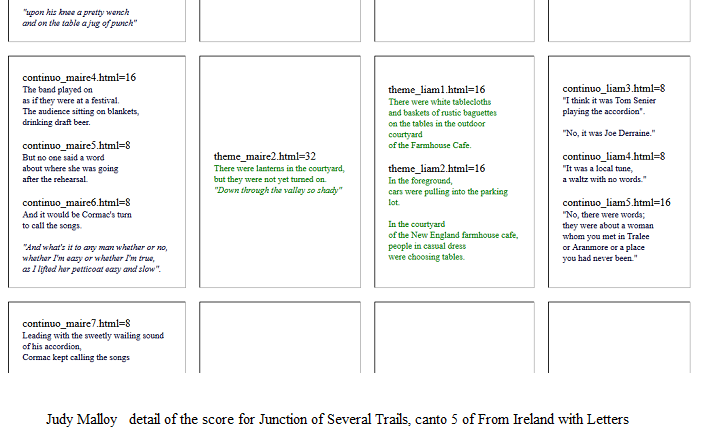
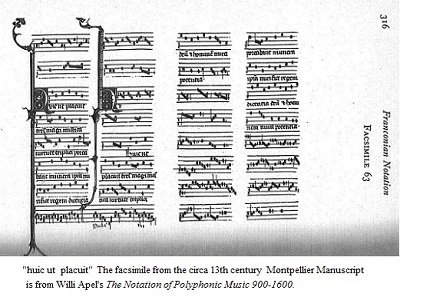 Serving as an introduction to the themes of the work as a whole, the Prologue is indexed as if it was a dance, where the "music" of the "lines" on the right side of the screen keys the separate yet merging narratives of Máire Powers and Liam O'Brien on the left side of the screen. If the reader plays the text by click-moving between the two columns, a picture of the different ways that Liam, the researcher, and Máire, the musician, approach their subjects emerges. (But note that some of the links are melismatic, i.e. one "line" leads to a series of lexias, all of which are represented by this one line)
Serving as an introduction to the themes of the work as a whole, the Prologue is indexed as if it was a dance, where the "music" of the "lines" on the right side of the screen keys the separate yet merging narratives of Máire Powers and Liam O'Brien on the left side of the screen. If the reader plays the text by click-moving between the two columns, a picture of the different ways that Liam, the researcher, and Máire, the musician, approach their subjects emerges. (But note that some of the links are melismatic, i.e. one "line" leads to a series of lexias, all of which are represented by this one line)
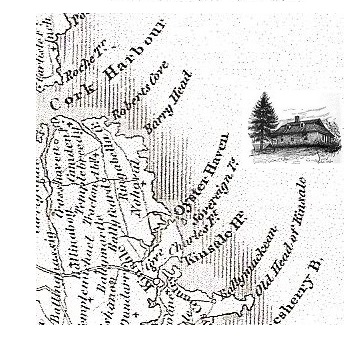 In the lay/lament telling of the terrible story of Cromwell's destruction of Ireland and the ensuing Transplantation and slavery, Irish American fiddler Máire Powers heightens the aisling tradition of Irish poetry by evoking the Irish Harpers at the 1792 Belfast Harp Festival, where a woman harper, Rose Mooney, was one of ten harpers, who represented the best of Irish musicians. Irish patriots James Napper Tandy, John Keogh, and Wolfe Tone were in the audience.
In the lay/lament telling of the terrible story of Cromwell's destruction of Ireland and the ensuing Transplantation and slavery, Irish American fiddler Máire Powers heightens the aisling tradition of Irish poetry by evoking the Irish Harpers at the 1792 Belfast Harp Festival, where a woman harper, Rose Mooney, was one of ten harpers, who represented the best of Irish musicians. Irish patriots James Napper Tandy, John Keogh, and Wolfe Tone were in the audience.
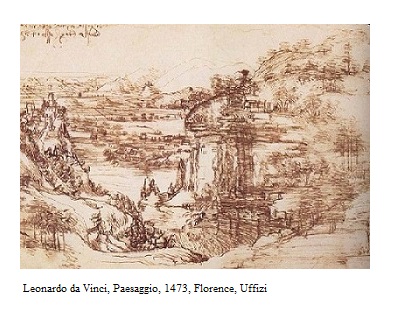 In the art or music sense, a "passage" is a short part of a music composition or a detail of a work of literature or painting.
In the art or music sense, a "passage" is a short part of a music composition or a detail of a work of literature or painting.
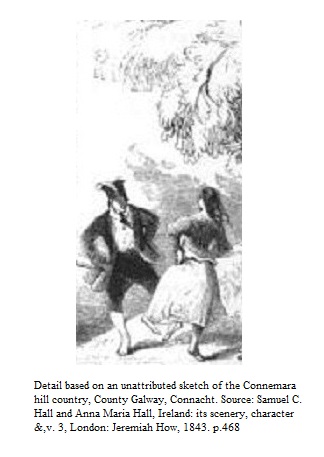 Simulating an Irish fiddlers practice session that begins with "The Galway Girl" segues into
the "Mason's Apron Reel" and ends with a not yet named jig,
fiddlers passage is a work of polyphonic electronic literature that is written to the author's
Simulating an Irish fiddlers practice session that begins with "The Galway Girl" segues into
the "Mason's Apron Reel" and ends with a not yet named jig,
fiddlers passage is a work of polyphonic electronic literature that is written to the author's
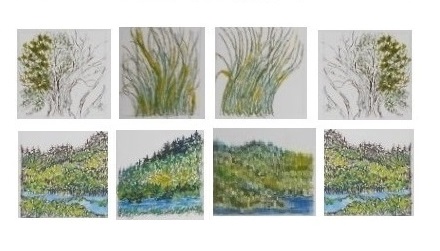 In reviewing the creation of Junction of Several Trails as documented in the pages of my writer's notebook, what seems most important is not the record of the difficult writing, design, and coding of this work, but the extraordinary histories, poetry, and musicology which were read and the complex and beautifully played/sung music that was listened to during the creation of this work beginning with
a quixotic search for the lost Irish sonata (Grattan Flood, A History of Irish Music, pp 19-20) that has informed the composition of From Ireland with Letters from its onset.
In reviewing the creation of Junction of Several Trails as documented in the pages of my writer's notebook, what seems most important is not the record of the difficult writing, design, and coding of this work, but the extraordinary histories, poetry, and musicology which were read and the complex and beautifully played/sung music that was listened to during the creation of this work beginning with
a quixotic search for the lost Irish sonata (Grattan Flood, A History of Irish Music, pp 19-20) that has informed the composition of From Ireland with Letters from its onset.
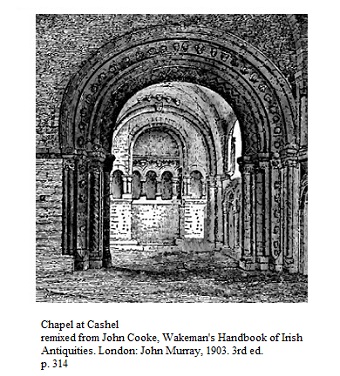 In Gone with Our Wanderers, a scholar confronts the known and the unknown in both his life and his work, as
with dense, rhythmic polyphonic text,
the narrative shifts to the time and place of Irish American sculptor, Hiram Powers, who creates an
iconic Abolitionist work in Florence against a background of The Risorgimento.
In Gone with Our Wanderers, a scholar confronts the known and the unknown in both his life and his work, as
with dense, rhythmic polyphonic text,
the narrative shifts to the time and place of Irish American sculptor, Hiram Powers, who creates an
iconic Abolitionist work in Florence against a background of The Risorgimento.
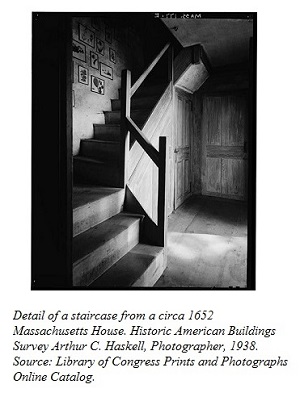 The time is the morning of April 24, 1660. The place is "Mystick Side" in the Massachusetts Bay Colony, in the area incorporated as Malden in 1649.
The time is the morning of April 24, 1660. The place is "Mystick Side" in the Massachusetts Bay Colony, in the area incorporated as Malden in 1649.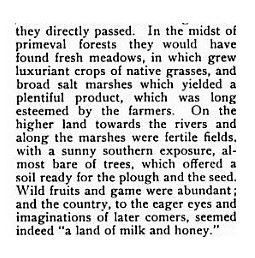 Based on Narrabase2, which I developed (from 1987-1988) for file 3 of Uncle Roger and its name was Penelope, fiddlers_dawn is a transparent authoring system that -- (pseudo)randomly displaying either single lexias or "pages" with 4 lexias -- facilitates the creation of cohesive narrative with randomly produced lexias. fiddlers_dawn also includes elements of an era when I decided that it was easier to write the text directly into the program than it was to "call" small files.
Based on Narrabase2, which I developed (from 1987-1988) for file 3 of Uncle Roger and its name was Penelope, fiddlers_dawn is a transparent authoring system that -- (pseudo)randomly displaying either single lexias or "pages" with 4 lexias -- facilitates the creation of cohesive narrative with randomly produced lexias. fiddlers_dawn also includes elements of an era when I decided that it was easier to write the text directly into the program than it was to "call" small files.
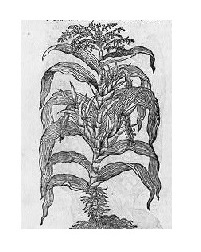 Deloraine Pendre Corey, The history of Malden, Massachusetts, 1633-1785. Malden, 1899.
Deloraine Pendre Corey, The history of Malden, Massachusetts, 1633-1785. Malden, 1899.
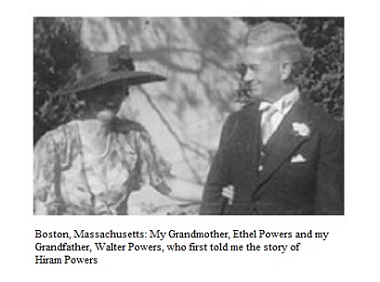 ..."And, of course, there, in a vision of the night,
..."And, of course, there, in a vision of the night,